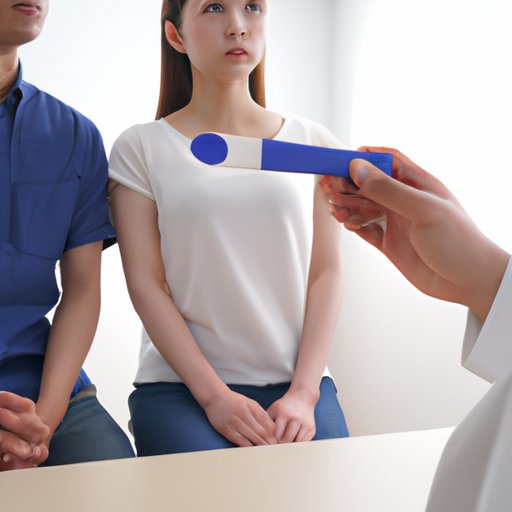
Introduction
Sexually transmitted diseases (STDs) are infections that can be transmitted through sexual contact. While some STDs may not have noticeable symptoms, others can lead to serious health complications if left untreated. It’s important to know the signs and symptoms of STDs, ways to prevent them, and how to seek treatment if needed. In this article, we’ll explore how to recognize signs of STDs, discuss the most common types of STDs, ways to prevent them, how to get tested, and how to seek treatment if necessary.
Symptoms of STDs
STD symptoms may vary depending on the type of infection. Some common symptoms of STDs include:
- Pain or burning during urination
- Genital discharge
- Pain or discomfort during sex
- Itching, burning, or tingling in the genital area
- Sores, bumps, or blisters on or around the genitals or anus
- Fever, headaches, or body aches
- Rash or redness in the genital area
It’s important to note that not all STDs have noticeable symptoms, and some infections may take weeks or months to develop symptoms after initial exposure.
Additionally, each STD may have specific signs and symptoms that may vary between individuals. For example:
- Chlamydia: Often has no symptoms, but can cause pain during sex or discharge from the penis or vagina
- Gonorrhea: Can cause similar symptoms to chlamydia, but may also cause anal discharge or painful bowel movements
- Herpes: Can cause sores or blisters that may be painful or itchy, but may not have any noticeable symptoms for some individuals
- HPV: Often has no symptoms, but can cause genital warts or abnormal cell changes that may lead to cancer
- HIV: Often has no symptoms, but may cause flu-like symptoms during initial infection and can lead to severe health complications if left untreated
Types of STDs
There are many different types of STDs, but some of the most common ones include:
- Chlamydia
- Gonorrhea
- Syphilis
- Herpes
- HPV
- HIV
Each STD has different methods of transmission, symptoms, and treatment options. For example:
- Chlamydia and gonorrhea are bacterial infections that can be treated with antibiotics
- Syphilis is a bacterial infection that can also be treated with antibiotics, but may cause serious health complications if left untreated
- Herpes is a viral infection that has no cure, but can be managed with antiviral medications to reduce symptoms and outbreaks
- HPV is a viral infection that often resolves on its own, but can lead to cancer in some cases
- HIV is a viral infection that attacks the immune system and can lead to AIDS without treatment
It’s important to have a basic understanding of each STD and to seek medical treatment if symptoms arise.
Prevention of STDs
The best way to prevent STDs is to practice safe sex. This can include:
- Using condoms or dental dams during sex
- Getting vaccinated for STDs such as HPV
- Limiting the number of sexual partners
- Avoiding sex while under the influence of drugs or alcohol
- Getting tested for STDs regularly
It’s also important to talk to sexual partners about their sexual history and STD testing status before engaging in sexual activity.
Getting Tested For STDs
STD testing typically involves a blood sample or swab of the affected area to check for signs of infection. Testing may also involve a physical exam or Pap smear for certain STDs. It’s important to ask for STD testing if symptoms arise or if you believe you may have been exposed.
STD testing can be done at a variety of healthcare facilities, including clinics, doctor’s offices, and Planned Parenthood locations. Some testing may also be done at home with a mailed-in sample. Test results may take a few days to a few weeks to come back, depending on the specific test.
If a test comes back positive for an STD, it’s important to seek treatment and notify sexual partners to get tested and treated if necessary.
Partner Communication
Discussing STDs with a partner may feel uncomfortable, but it’s an important step in preventing the spread of infections. Some tips for discussing STDs with a partner include:
- Being honest and direct about sexual history and testing status
- Encouraging open and non-judgmental communication
- Offering to get tested together
- Discussing ways to practice safe sex together
It’s important to remember that discussing STDs is a normal part of sexual health and can help prevent the spread of infection.
Seeking Treatment
If a test comes back positive for an STD, it’s important to seek treatment as soon as possible. Many STDs can be treated with antibiotics or antiviral medications, and early treatment can prevent health complications and the spread of infection to others. It’s also important to follow up with healthcare providers regularly to monitor and manage any ongoing infections or complications.
Conclusion
STDs are a common but often preventable health issue. By being educated on the symptoms, prevention methods, testing, and treatment options, individuals can take control of their sexual health and prevent the spread of infection. Remember to practice safe sex, get tested regularly, talk to partners about STDs, and seek treatment if necessary.





